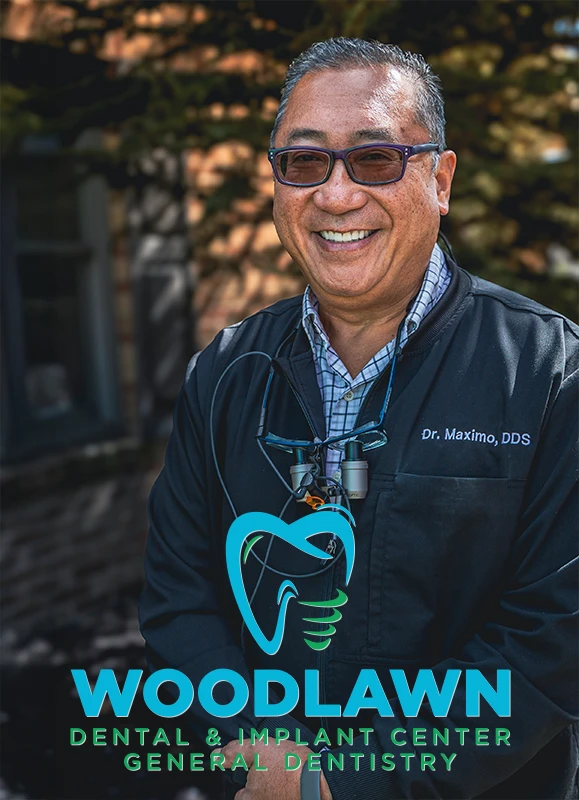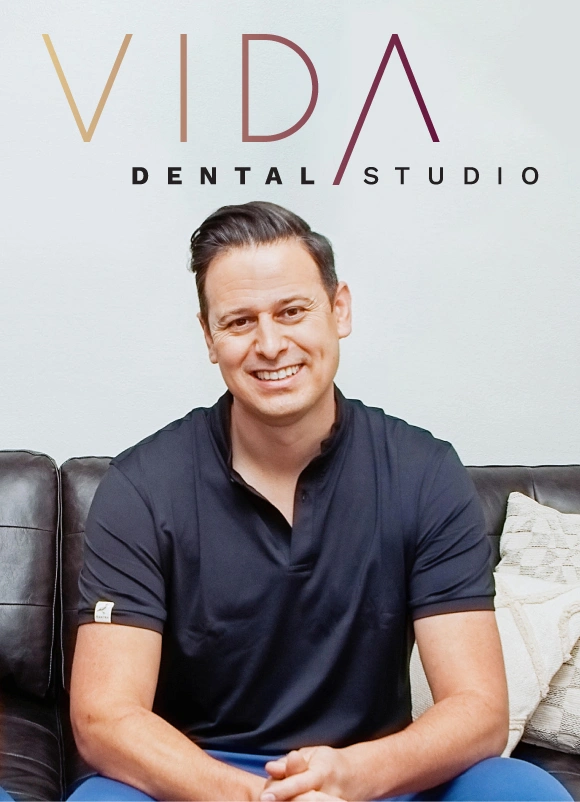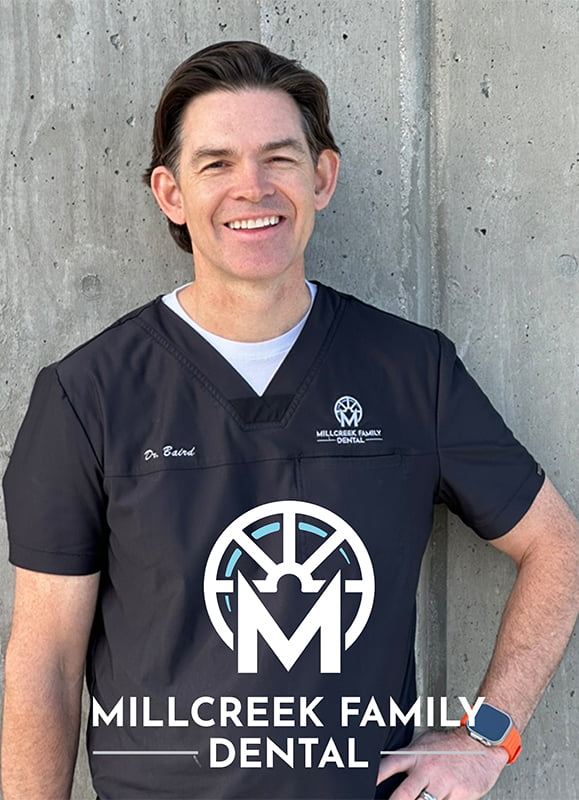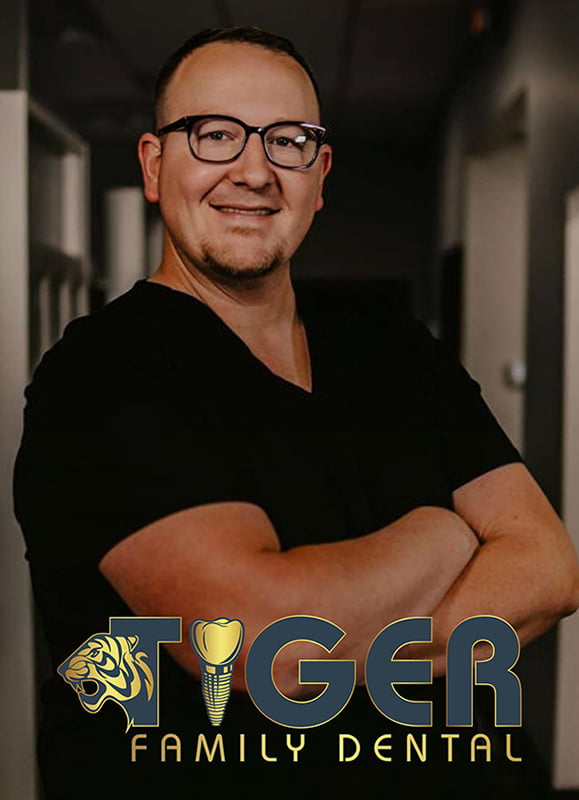PDA Member Featured in Dental Academy of Continuing Education Article – March 2021
Originally published by Dental Academy of Continuing Education, March, 2021.
Breathless: Oral Signs of a Silent Epidemic
A peer-reviewed article written by Kathryn Gilliam, BA, RDH, FAAOSH
Abstract
This is an exciting time to be in dentistry. Dentistry and dental hygiene are growing as medical specialties. As our understanding of the multiple links between the mouth and the body has increased, our roles have expanded to include comprehensive care of the patient’s whole health. One aspect of wholehealth care that can have an enormous life-changing and life-saving effect is to screen for sleep-disordered breathing. Breathing is the most essential function of our bodies. Without oxygen, we cannot survive. Yet, until recently, breathing was not considered a part of dentistry’s scope of practice. With the advent of comprehensive health care and integrative dental medicine, focus on the central role of airway and breathing disorders represents a shift in dentistry’s approach to patient care.1
Educational objectives
- Identify various types of sleep-disordered breathing
- Describe the screening process for identifying sleep-disordered breathing
- Appraise the risks of undiagnosed and untreated sleep-disordered breathing
- Recognize the signs and symptoms for sleep-disordered breathing in adults
- Distinguish the treatment options available for sleep-disordered breathing
In 2017, the American Dental Associa- tion (ADA) adopted a policy addressing dentistry’s role in discovering and treat- ing sleep-breathing disorders, including obstructive sleep apnea (OSA). In OSA, a physical obstruction, such as the tongue or the pharyngeal muscles, blocks the air- way, which interferes with breathing while the person is asleep. People with OSA have multiple episodes of difficulty breath- ing, with too little oxygen (hypopnea) or a complete lack of breathing (apnea) at night, which can severely impact health. The ADA policy encourages dental profes- sionals to screen patients for sleep-disor- dered breathing and to collaborate with medical physicians to manage patients with OSA.2 The focus on the airway, whichwas never part of the traditional dental school curriculum, is now a part of main- stream dentistry.
Dental professionals have easy access to examine their patients’ airways at every appointment, and so are in the perfect position to be the first to discover possible airway restrictions and sleep-disordered breathing.3 The diagnosis of sleep-disor- dered breathing must be made by a sleep specialist; however, many people will not seek a sleep evaluation without the rec- ommendation of another health-care pro- fessional. And this is where the dental professional can make an impact.
The ADA states that approximately 60% of Americans see a dentist annually.4 It is estimated that 23 million Americans suffer from OSA, with 80% of moderate to severe cases undiagnosed.5 This means it is most likely that several people who enter our practices every day suffer from undi- agnosed airway restrictions and sleep- disordered breathing.
Who is at risk for obstructive sleep apnea?
This condition can strike people of any age, including infants and children, but it is most frequently seen in men over 40, especially those who are overweight or obese. The increasing obesity rate in the United States is believed to be related to the increase in OSA.6 Too little good-qual- ity, restful sleep can contribute to obesity, and it may be unclear which came first, the obesity or the OSA.
In no way, however, is OSA limited to overweight men. Many women, even slim women, have been diagnosed with OSA or other types of sleep-disordered breathing, so clinicians must be vigilant to screen every patient, regardless of age, sex, or body type, for airway disorders.7
Obstructive sleep apnea and snoring
OSA is the most common form of sleep-dis-ordered breathing. In OSA, a person stops breathing during sleep and, as a result, the brain experiences repeated episodes of suf- focating.3 In an attempt to get critical oxy- gen, the brain signals the person to gasp for air, which is often heard as a loud snort or snore. Snoring is viewed as embarrass- ing and people are often hesitant to admit that they snore. Therefore, many people go untreated and are at risk of serious health consequences. Additionally, many people believe that simple snoring is not a signifi- cant concern, but all snoring is abnormal and should be considered a serious symp- tom and possible sign of OSA.8
The central characteristic of OSA is the increased collapsibility of the upper airway during sleep. The restriction or blockage of the airway occurs during sleep, usually when the tongue collapses against the soft palate and the soft palate collapses against the back of the throat. The result is markedly reduced or absent airflow from the nose or mouth. This is usually accompanied by desaturation of oxyhemoglobin (oxygenated blood) and is typically terminated by a brief micro- arousal in which the brain rouses the sleeper, usually only partially, to signal breathing to resume.3 The dental profes- sional must refer to an otolaryngologist to evaluate nasal patency.
In those with severe OSA, this can hap- pen hundreds of times a night, leading to sustained reduction in oxyhemoglobin sat- uration. This stresses the sleeper’s body and causes sleep fragmentation, often most intensely late in the sleep cycle during slow-wave and rapid-eye-movement (REM) sleep. As a result, the patient’s sleep is extremely fragmented and of poor quality.3
Symptoms may include snoring, pauses in breathing, and disturbed sleep. This sleep disturbance stimulates the parasympathetic/sympathetic dysregu- lation that is very stressful to the body and increases systemic inflammation.9 Systemic inflammation is the number one factor in atherosclerosis and accelerated aging.10 This is one of the ways that OSA contributes to illness and death.
Common misdiagnosis
Often, people with sleep-disordered breath- ing are misdiagnosed with other condi- tions that present with similar symptoms. According to DeWitt C. Wilkerson, DMD, and E. Shanley Lestini, DDS, in their book, The Shift, the Dramatic Movement toward Health Centered Dentistry, children with OSA or upper airway resistance syndrome are often misdiagnosed with attention defi- cit hyperactivity disorder (ADHD). Young and middle-aged adults are frequently misdiagnosed with temporomandibular joint dysfunction. Middle-aged adults with OSA or upper airway resistance syndrome often show signs and symptoms that mimic dementia, challenges with memory and concentration, difficulty making decisions, and depression.1
Risks of untreated obstructive sleep apnea
The dental professional must be aware of the multiple risks of untreated OSA and be able to share this information with patients who may have no idea of the seri- ous consequences they face if sleep-dis-ordered breathing isn’t treated.
Hypertension: OSA increases risk for hypertension by 5.5 times. Multiple awak- enings stress the body, causing hormone systems to go into overdrive, resulting in increased blood pressure.11
Cardiovascular disease: People who suffer from OSA have a higher risk for heart attacks, strokes, and atrial fibril- lation. OSA disrupts the way the body receives oxygen, which makes it difficult for the brain to control the blood flow to the brain and the arteries.12
Type 2 diabetes: OSA affects 80% or more people with type 2 diabetes. OSA alters glucose metabolism and promotes insulin resistance.13
Obesity: Excess weight increases the risk of developing OSA, and OSA makes weight loss difficult. Additionally, OSA is related to insulin resistance and causes the release of the hormone ghrelin, which increases cravings for sweets. Nocturnal awakenings and microarousals are con- nected to chronic cortisol release.14
Acid reflux: Up to 60% of patients who suffer from OSA also suffer from gastroesophageal reflux. More research is needed to determine the exact relation- ship, but studies have shown that treat- ment with a CPAP can improve acid reflux symptoms.15
Asthma: Studies confirm that OSA is an independent risk factor for exacerba- tion of asthma. Bronchoconstriction and gastroesophageal reflux have been sug- gested as mechanisms that can lead to worsening asthma in patients with OSA.16
Cancer: Intermittent hypoxia has been implicated in the increased incidence and more adverse prognosis of cancer.17
Auto and other accidents: Insuffi- cient quantity and quality of sleep results in fatigue, increasing the risk of falling asleep at the wheel. People with sleep apnea are up to five times more likely to have traffic accidents.18
Depression: Depression and other mood disorders have been found to be common in those who experience exces- sive daytime sleepiness.19
Fibromyalgia: Fibromyalgia is a wide- spread pain and fatigue syndrome with an unknown etiology. People with fibro- myalgia have a tenfold increase in sleep- disordered breathing, including OSA.20
Chronic fatigue syndrome: Chronic fatigue syndrome is a disabling illness affect- ing approximately 0.2% of the US popula- tion.21 Disrupted sleep is a classic sign of chronic fatigue syndrome in patients report- ing excessive daytime sleepiness, nonrestor- ative sleep, difficulty falling asleep and staying asleep, and sleep disorders such as insomnia, narcolepsy, and OSA.
Reduced libido: OSA has been associ- ated with altered pituitary-gonadal func- tion, such as decreased testosterone and sexual dysfunction, manifested primarily as erectile dysfunction and decreased libido.22
Dental screenings
The goal of dental screenings is to assess the patient for both sleep and awake symptoms. Certain criteria should automatically trigger a referral to a sleep physician for evaluation and diagnosis, including snoring, witnessed apnea, exces- sive daytime sleepiness, and the presence of medical comorbidities such as hyper- tension, obesity, depression, gastroesoph- ageal reflux, diabetes, and asthma.8,23
Signs and symptoms23
Mouth breathing: Most studies show that nasal breathing is ideal breathing, especially since the nose and the parana- sal sinuses are the primary sites in which our bodies produce nitric oxide, which is critical for whole-body health.24
Bruxism: Studies show that nearly one in four people with OSA exhibit night- time bruxism. Some researchers believe that upper airway resistance causes an arousal, which increases stress through- out the body, leading to an increase in the activity of the muscles of mastication, resulting in bruxing. The movement of the jaw forward opens the airway and the per- son is able to take a breath. Another the- ory is that when the tissues of the upper airway collapse during episodes of snor- ing, partial, or complete apnea, the brain signals the jaw muscles to tighten, which stiffens the sides of the throat, preventing the collapse of the airway tissues.
Snoring: Chronic snoring is a sign of structural or functional pathology in the airway.
Poor sleep quality and daytime sleepiness: Multiple arousals and sleep fragmentation result in daytime sleepi- ness, ADHD, and bedwetting in children, morning headaches, joint pain, frequent trips to the bathroom, foggy thinking, temporomandibular joint dysfunction, muscle pain, and achy joints, among other conditions. A patient who falls asleep in the reception room or during dental treat- ment may well suffer from sleep-disor- dered breathing.
Nasal congestion: Undiagnosed and untreated allergy-related and nasal air- way-related problems, such as sinus infec- tions and deviated septum, can lead to sleep-disordered breathing. Nasal con- gestion and mouth breathing can signal sleep-disordered breathing.
Forward head posture: Forward head posture is associated with mouth breathing and with TMD and cervical neck pain, which can all be related to sleep-disordered breathing. Additionally, difficulty breathing in a supine position, as in the dental chair, may be a sign of sleep-disordered breathing.
Tongue tie: A short lingual frenum can decrease the size of upper airway support by the tongue and contribute to upper airway collapse.
Chronic cough: Chronic cough due to gastric reflux is closely associated with OSA. Deviated septum: A deviation in the septum, which separates the two nos- trils, can alter airflow through the nostrils, reducing the effectiveness of breathing through the nose, resulting in sleep-breathing difficulties.
Mallampati score >2: The Mallampati score involves visual assessment of the distance between the tongue and the roof of the mouth, which determines the amount of airway space. A higher score predicts the risk for OSA.
Scalloped tongue: When the den- tal arches are narrow, the tongue space is restricted and the tongue overlaps the teeth, resulting in indentations, or scallops, along the lateral borders of the tongue. This indicates restricted airway space. Tongue scallops may also appear as a result of the tongue being pushed forward against the teeth in an effort to open the airway.
Skeletal profile: Maxillary and/or mandibular skeletal underdevelopment, or narrow jaws, can compromise the air- way space.
Screening guidelines
According to the American Academy of Dental Sleep Medicine, the following guidelines should be followed in screen- ing adult dental patients for sleep-related breathing disorders.8
- Review screening questionnaires, medical history, dental history, family history, and medications. Many medi- cations may significantly impact the sleep schedule as well as sleep respi- ratory patterns.8
- Record baseline blood pressure, neck cir- cumference, and body mass index (BMI).
- Evaluate oral and facial anatomic con- ditions, including maxillary and man- dibular arch formation, pharyngeal crowding, sleep bruxism, and enamel erosion associated with gastroesopha- geal reflux.
- Visualize the posterior pharyngeal wall, soft palate, uvula, and palatine tonsils. The Mallampati score and the Friedman tongue position classifica- tion are commonly used to evaluate these structures.25
- The primary site of upper airway obstruction occurs in the retropala- tal tissues, so the nose should also be evaluated for possible obstructions. In the dental practice, we are restricted to questioning patients whether they are able to breathe well through the nose and if they are aware of nasal devia- tion. The patient should be referred to an ear, nose, and throat physician for evaluation if either the nasal or pha- ryngeal patency is compromised.8
- Evaluate the tongue size, position, color, shape, and texture. A scalloped tongue is a highly significant sign in OSA.26
- Examine the temporomandibular joint as well as the masseter, tempo- ralis, and sternocleidomastoid mus- cles. Any crepitus and pain should be noted. There may be an association between TMJ disorders and sleep-dis- ordered breathing.27
- The tooth examination should include angle classification, overbite and overjet, evaluation of midlines, crossbites, wear facets, spacing, and crowding. Bruxism is a telltale sign of sleep-related breathing disorder and should be a red flag when you see occlusal wear facets, incisal wear,and mandibular and maxillary tori.
- Home sleep tests (HST) measure the heart rate, airflow, the apnea-hypop- nea index (AHI), oxygen saturation, respiratory effort, and sleep position.
- Patient interviews that include a few simple questions can help identify possible OSA.
Assessment tools for obstructive sleep apnea
The Epworth Sleepiness Scale: This questionnaire can reveal how sleepy a patient feels during waking hours and can identify those who may be at risk for OSA.
The STOP-Bang questionnaire: This instrument asks about fatigue, snoring, and blood pressure, as well as measurements of body mass, neck size, age, and gender.
Berlin questionnaire: This ques- tionnaire asks questions similar to the STOP-Bang.
Apps: There are now computer appli- cations that can be used on smartphones and other smart devices that can track snoring and risks for OSA.
High-resolution pulse oximetry or heart rate variability, or a home sleep test: These professional tools collect over- night data to be analyzed by the dentist or physician.
Polysomnogram: This professional test is performed in a sleep lab.
Gathering all of this data will inform the examining dentist and dental hygien- ist of any need to refer the patient to a sleep physician.
Treatment28
CONTINUOUS POSITIVE AIRWAY PRESSURE (CPAP)
The standard treatment for OSA is con- tinuous positive airway pressure, which involves using a device that delivers pressurized air through the nose, or nose and mouth, to the throat by way of a mask. That pressure keeps the throat from collapsing during sleep and enables normal breathing.
There are some people who don’t tolerate a CPAP well. For those people, there are alternative treatments.
CPAP ALTERNATIVES
Orofacial myofunctional therapy (OMT):
OMT strengthens muscle weakness in the mouth, tongue, and the muscles of the oro- pharyngeal complex. It has been shown to reduce AHI and arousals, and to improve subjective symptoms of daytime sleepiness, sleep quality, and life quality.29
Mandibular advancement appli- ance: The jaw is moved forward to increase upper airway space and reduce air resistance.
Nasal expiratory positive airway pressure (nasal EPAP): Prevents upper airway collapse by creating an airtight seal of the nostrils.
Oral pressure therapy: Application of negative pressure to the upper airway to reposition the tongue and soft palate.
Positional therapy: Special pillows help people remain on their sides during sleep, reducing airway obstruction.
Tonsillectomy and adenoidectomy: Removal of tonsils and/or adenoids if enlarged and contributing to airway restriction.
Uvulopalatopharyngoplasty (UP3): Removal of excess tissue in the soft palate to widen the airway and allow easier flow of air.
Genioglossus advancement (GGA): Recommended when the airway collapses behind the tongue. The mandible is moved forward, pulling the base of the tongue muscles forward to open the airway.
Inspire hypoglossal nerve stimu- lator: A monitor is implanted to deliver mild stimulation to airway muscles and move the tongue and other soft tissues away from the upper airway to enable improved breathing.
Maxillomandibular advancement (MMA) surgery: Shortened maxilla or mandible are lengthened and positioned forward to enhance the airway.
Maxillomandibular expansion (MME): This combination of orthodon- tic appliances and surgical intervention is used to enlarge the airway space and increase the intraoral space for the tongue.
Weight loss or bariatric surgery: Obesity may cause fatty tissue to build up around the throat and at the base of the tongue, impeding airway space. Weight loss may reduce fatty tissue and result in a more open airway.
Tongue reduction surgery: Reduc- ing the size of the tongue may improve airflow and breathing.
Buteyko training and mouth taping: Breathing exercises and mouth taping are used to encourage nasal breathing.
Conclusion
As dentistry grows as a medical specialty, dentists and dental hygienists are tasked with ever-expanding roles. We must study areas of health that we never learned in dental and dental hygiene school. New research is being published and the stan- dard of care continues to evolve. This is what keeps dentistry fresh, exciting, and challenging. We have increasing opportunities to elevate our identities as health-care professionals, to help our patients achieve higher levels of overall health, and to save lives.
References
- Wilkerson DC, Lestini ES. The Shift: The Dramatic Movement Toward Health Centered Dentistry. Widiom Publishing; 2019:117-192.
- Stickle, Dillon. American Dental Association Adopts Policy on Dentistry’s Role in Sleep-Disordered Breathing. Sleep Review. March 14, 2018. Accessed January 30, 2020. https://www.sleepreviewmag. com/sleep-treatments/therapy-devices/oral- appliances/american-dental-association-policy- dentistrys-role-sleep-disordered-breathing/
- Memon J, Manganaro SN. Obstructive sleep- disordered breathing. StatPearls. Updated May 29, 2020. https://www.ncbi.nlm.nih.gov/books/ NBK441909
- Health Policy Institute. The oral health care system: a state-by-state analysis. American Dental Association. Accessed January 29, 2020. http://www.ada. org/~/media/ADA/Science%20and%20Research/ HPI/OralHealthCare-StateFacts/Oral-Health-Care- System-Full-Report.ashx
- American Sleep Apnea Association. Sleep apnea information for clinicians. Accessed January
30, 2020. https://www.sleepapnea.org/learn/ sleep-apnea-information-clinicians - Al Lawati NM, Patel SR, Ayas NT. Epidemiology,
risk factors, and consequences of obstructive sleep apnea and short sleep duration. Prog Cardiovasc Dis. 2009;51(4):285-293. - Wimms A, Woehrle H, Ketheeswaran S, Ramanan D, Armitstead J. Obstructive sleep apnea in women: Specific issues and interventions. Biomed Res Int. 2016;2016:1764837. doi: 10.1155/2016/1764837
- Levine M, Bennett KM, Cantwell MK, Postol K, Schwartz DB. Dental sleep medicine standards
for screening, treating, and managing adults with sleep-related breathing disorders. J Dent Sleep Med. 2018;5(3):61-68. doi: 10.15331/jdsm.7030 - Mansukhani MP, Kara T, Caples S, Somers VK. Chemoreflexes, sleep apnea, and sympathetic dysregulation. Curr Hypertens Rep. 2014;16(9):476. doi:10.1007/s11906-014-0476-2
- Sanada F, Taniyama Y, Muratsu J, et al. Source of chronic inflammation in aging. Front Cardiovasc Med. 2018;5:12. doi:10.3389/fcvm.2018.00012
- Dopp JM, Reichmuth KJ, Morgan BJ. Obstructive sleep apnea and hypertension: mechanisms, evaluation, and management. Curr Hypertens Rep. 2007;9(6):529-534.
- Parish JM, Somers VK. Obstructive sleep apnea and cardiovascular disease. Mayo Clin Proc. 2004;79(8):1036-1046.
- Pamidi S, Tasali E. Obstructive sleep apnea and type 2 diabetes: Is there a link? Front Neurol. 2012;3:126. doi:10.3389/fneur.2012.00126
- Romero-Corral A, Caples SM, Lopez-Jimenez F, Somers VK. Interactions between obesity and obstructive sleep apnea: implications for treatment. Chest. 2010;137(3):711-719. doi:10.1378/ chest.09-0360
- Jung HK, Choung RS, Talley NJ. Gastroesophageal reflux disease and sleep disorders: evidence for a causal link and therapeutic implications. J Neurogastroenterol Motil. 2010;16(1):22-29. doi:10.5056/jnm.2010.16.1.22
- Alkhalil M, Schulman E, Getsy J. Obstructive sleep apnea syndrome and asthma: What are the links? J Clin Sleep Med. 2009;5(1):71-78.
- Gozal D, Farré R, Nieto FJ. Obstructive sleep apnea and cancer: epidemiologic links and theoretical biological constructs. Sleep Med Rev. 2016;27:43- 55. doi:10.1016/j.smrv.2015.05.006
- Tregear S, Reston J, Schoelles K, Phillips B. Obstructive sleep apnea and risk of motor vehicle crash: systematic review and meta-analysis. J Clin Sleep Med. 2009;5(6):573-581.
- Ejaz SM, Khawaja IS, Bhatia S, Hurwitz TD. Obstructive sleep apnea and depression: a review. Innov Clin Neurosci. 2011;8(8):17-25.
- Köseog ̆ lu HI, Inanır A, Kanbay A, et al. Is there a link between obstructive sleep apnea syndrome and fibromyalgia syndrome? Turk Thorac J. 2017;18(2):40‐46. doi:10.5152/ TurkThoracJ.2017.16036
- Jackson ML, Bruck D. Sleep abnormalities in chronic fatigue syndrome/myalgic encephalomyelitis: a review. J Clin Sleep Med. 2012;8(6):719‐728. doi:10.5664/jcsm.2276
- Kim SD, Cho K-S. Obstructive sleep apnea and testosterone deficiency. World J Mens Health. 2018;37(1):12‐18. doi:10.5534/wjmh.180017
- 23. Pinto JA, Ribeiro DK, da Silva Cavallini AF, et al. Comorbidities associated with obstructive sleep apnea: a retrospective study. Int Arch
- Otorhinolaryngol. 2016;20(2):145-150. doi:10.1055/s-0036-1579546
- Lundberg JO, Farkas-Szallasi T, Weitzberg E, et al. High nitric oxide production in human paranasal sinuses. Nat Med. 1995;1(4):370-373.
- Friedman M, Hamilton C, Samuelson CG, et al. Diagnostic value of the Friedman tongue position and Mallampati classification for obstructive sleep apnea: a meta-analysis. Otolaryngol Head Neck Surg. 2013;148(4):540-547. doi:10.1177/0194599812473413
- Weiss TM, Atanasov S, Calhoun KH. The association of tongue scalloping with obstructive sleep apnea and related sleep pathology. Otolaryngol Head Neck Surg. 2005;133(6):966-971.
- Smith MT, Wickwire EM, Grace EG, et al. Sleep disorders and their association with laboratory pain sensitivity in temporomandibular joint disorder. Sleep.2009:32(6):779-790.
- Calik MW. Treatments for obstructive sleep apnea. J Clin Outcomes Manag. 2016;23(4):181-192.
- de Felício CM, da Silva Dias FV, Trawitzki LVV. Obstructive sleep apnea: focus on myofunctional therapy. Nat Sci Sleep. 2018;10:271-286. doi: 10.2147/NSS.S141132
Read the original article here.

KATHRYN GILLIAM, BA, RDH, FAAOSH, HIAOMT, is the CEO and founder of PerioLinks, a consulting and speaking company. She is also an oral wellness practitioner, key opinion leader, industry influencer, and author. Kathryn’s interest in the medical side of dentistry led her to graduate twice from the Bale Doneen Preceptorship for Cardiovascular Disease Prevention. She then completed level one of the functional oral systemic health mini residency of the Exceptional Dental Courses, and, in 2018, she earned a fellowship in the American Academy for Oral Systemic Health. Kathryn earned a certification in biological dental hygiene from both the International Academy of Biological Dentistry and Medicine and the International Academy of Oral Medicine and Toxicology in 2020. Kathryn is a faculty member and dental hygiene specialty coach for the Productive Dentist Academy. She also serves on the peer-review board for the Dental Academy for Continuing Education and has published multiple articles and continuing education courses.
Have a great experience with PDA recently?
Download PDA Doctor Case Studies


















